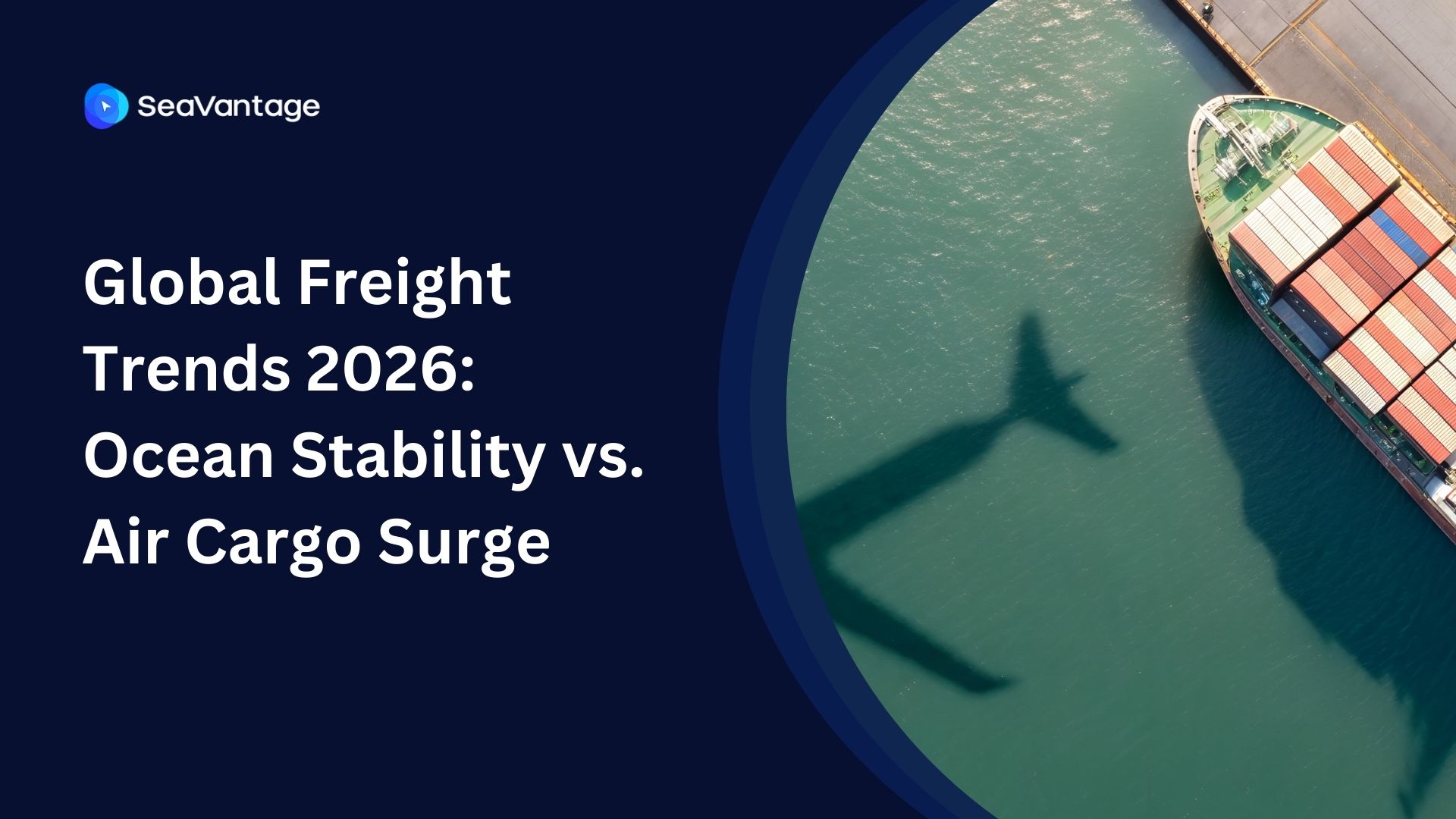Port Congestion: Why it Happens and Strategies SeaVantage Port Insight Can Help You Stay Resilient
What happens when the world's busiest waterways become choke points for global trade? In 2024, we've witnessed this scenario unfold dramatically with the ongoing crisis in the Red Sea and Suez Canal, where Houthi attacks on commercial vessels have forced many ships to reroute around Africa. This situation together with other recent events has reignited concerns about port congestion on a global scale, highlighting the fragility of our interconnected supply chains. As businesses and consumers grapple with the ripple effects of these disruptions, understanding the causes of port congestion and developing strategies to mitigate its impact has never been more crucial. This article delves into the complexities of port congestion and introduces how SeaVantage Port Insight can help businesses navigate these turbulent waters in an increasingly unpredictable global trade landscape.
Understanding Port Congestion
Port congestion occurs when a port's capacity to handle incoming and outgoing cargo is overwhelmed, resulting in significant delays and bottlenecks. Picture a busy highway during rush hour, but instead of cars, imagine massive container ships waiting in line to offload their cargo. This congestion can lead to extended wait times for vessels, overcrowded storage areas, and a general slowdown in the movement of goods.
Root Causes of Port Congestion
Several factors contribute to the congestion we see at ports around the world:
- Surge in Global Trade: As international commerce expands, ports face unprecedented volumes of cargo.
- Larger Vessels: The advent of mega-ships means ports must handle a larger number of containers at once, straining existing infrastructure.
- Equipment Shortages: A lack of containers, chassis, or handling equipment can create significant slowdowns.
- Workforce Challenges: Insufficient staffing or labor disputes can bottleneck operations.
- Extreme Weather Events: Hurricanes, floods, or other natural disasters can disrupt port activities for extended periods.
- Outdated Technology: Inefficient processes and systems can hamper smooth operations.
- Seasonal Peaks: Holiday shopping seasons or agricultural harvests can cause sudden spikes in cargo volume.
The Ripple Effect of Port Congestion
The impacts of port congestion extend far beyond the docks:
- Businesses face increased costs due to delays and storage fees.
- Consumers may experience product shortages or higher prices.
- Supply chains become less predictable, making planning more challenging.
- Local communities near ports may suffer from increased traffic and pollution.
How SeaVantage Port Insight Offers a Lifeline
In the face of these challenges, SeaVantage Port Insight emerges as a valuable tool for businesses looking to stay ahead of port congestion issues. Here's how it can help:
- Real-Time Visibility: SeaVantage Port Insight provides up-to-the-minute information on port conditions, vessel locations, and container statuses. This allows businesses to make informed decisions quickly.
- Predictive Analytics: By analyzing historical data and current trends, the platform can forecast incoming vessel traffic, allowing for proactive planning.
- Alternative Routing Options: When congestion strikes, SeaVantage Port Insight can help identify alternative ports or transportation modes to keep goods moving.
- Enhanced Communication: By providing a single source of truth, SeaVantage Port Insight improves coordination between all stakeholders in the supply chain.
- Performance Metrics: Businesses can benchmark port and carrier performance against industry standards, informing strategic decisions.
- Risk Mitigation: Early identification of potential disruptions allows for timely implementation of contingency plans.

Putting SeaVantage Port Insight to Work
By leveraging these features, businesses can:
- Reduce costs associated with delays and congestion.
- Improve delivery performance and customer satisfaction.
- Increase the overall resilience and adaptability of their supply chains.
- Make data-driven decisions about shipping routes and schedules.
- Strengthen partnerships across the supply chain through improved reliability and transparency.
Navigating the Future of Global Trade
As global trade continues to grow and evolve, port congestion is likely to remain a significant challenge. However, with tools like SeaVantage Port Insight, businesses are better equipped to navigate these complexities. By staying informed, adaptable, and proactive, companies can turn potential disruptions into opportunities for efficiency and growth.
In an era where the only constant is change, the ability to anticipate and respond to port congestion is more than just a competitive advantage—it's a necessity for survival in the global marketplace. With SeaVantage Port Insight, businesses have a powerful ally in their quest for supply chain resilience.
2025년 9월, 주요 글로벌 항만에서 어떤 운송사가 가장 긴 선박 체류 시간을 기록했는지 확인해보세요. 트렌드를 비교하고, 지연을 파악하며, 전체 항만 데이터를 통해 운송 전략을 최적화할 수 있습니다.
2025년 8월, 주요 글로벌 항만에서 어떤 운송사가 가장 긴 선박 체류 시간을 기록했는지 확인해보세요. 트렌드를 비교하고, 지연을 파악하며, 전체 항만 데이터를 통해 운송 전략을 최적화할 수 있습니다.
2025년 7월, 주요 글로벌 항만에서 어떤 운송사가 가장 긴 선박 체류 시간을 기록했는지 확인해보세요. 트렌드를 비교하고, 지연을 파악하며, 전체 항만 데이터를 통해 운송 전략을 최적화할 수 있습니다.
iscover the 4 critical ocean freight trends for 2026, from the Red Sea reopening and fleet overcapacity to shifting global trade maps. Prepare your supply chain now.
Discover key 2026 freight market trends: Port of Houston expansion, air cargo "super peak," and ocean freight stability. Plan your supply chain with SeaVantage.
Explore November 2025 global port dwell time data. See which ports and carriers led in efficiency across Antwerp, Busan, Long Beach, Rotterdam, and Singapore.



.svg)





.jpg)

.png)